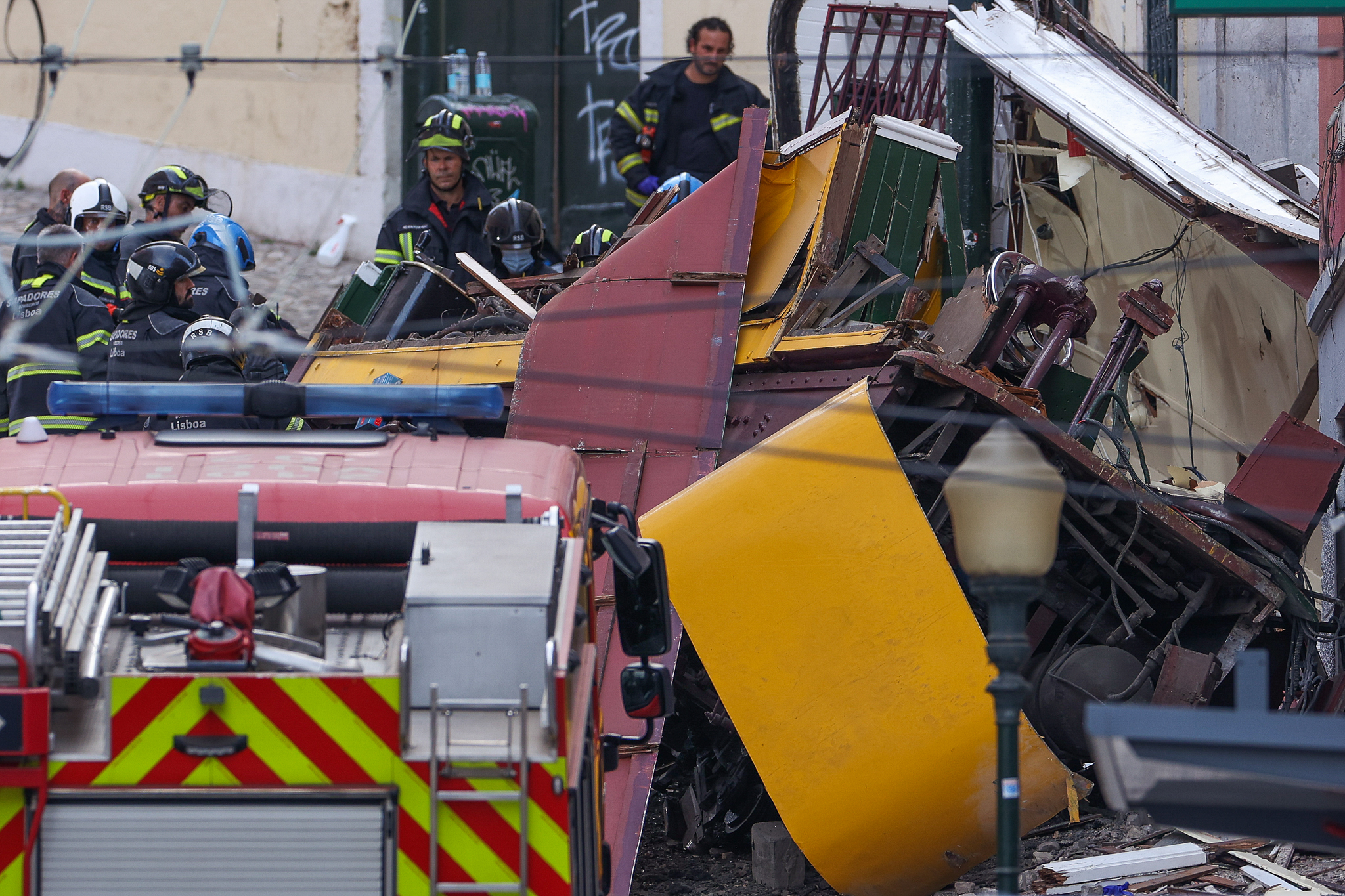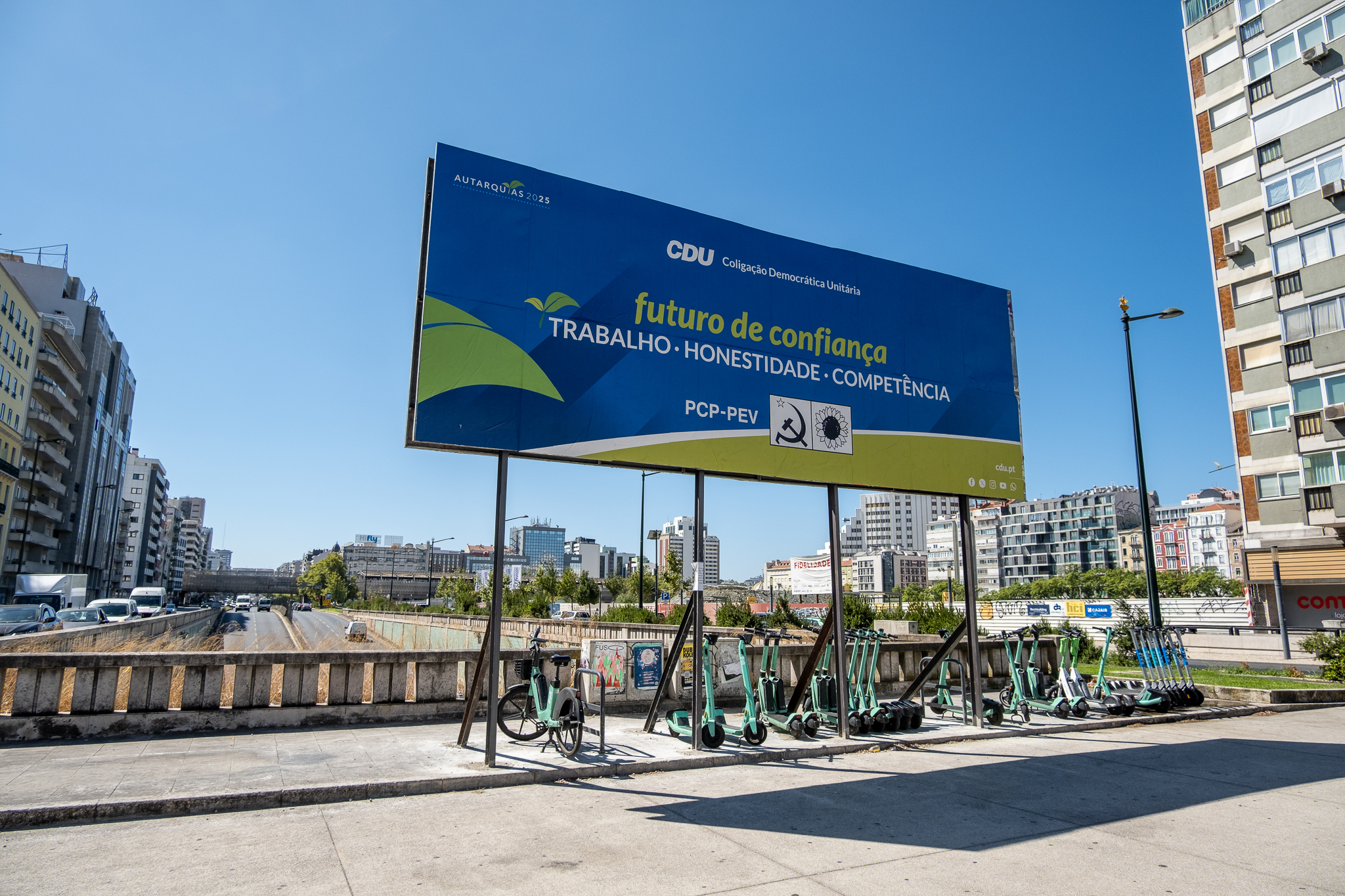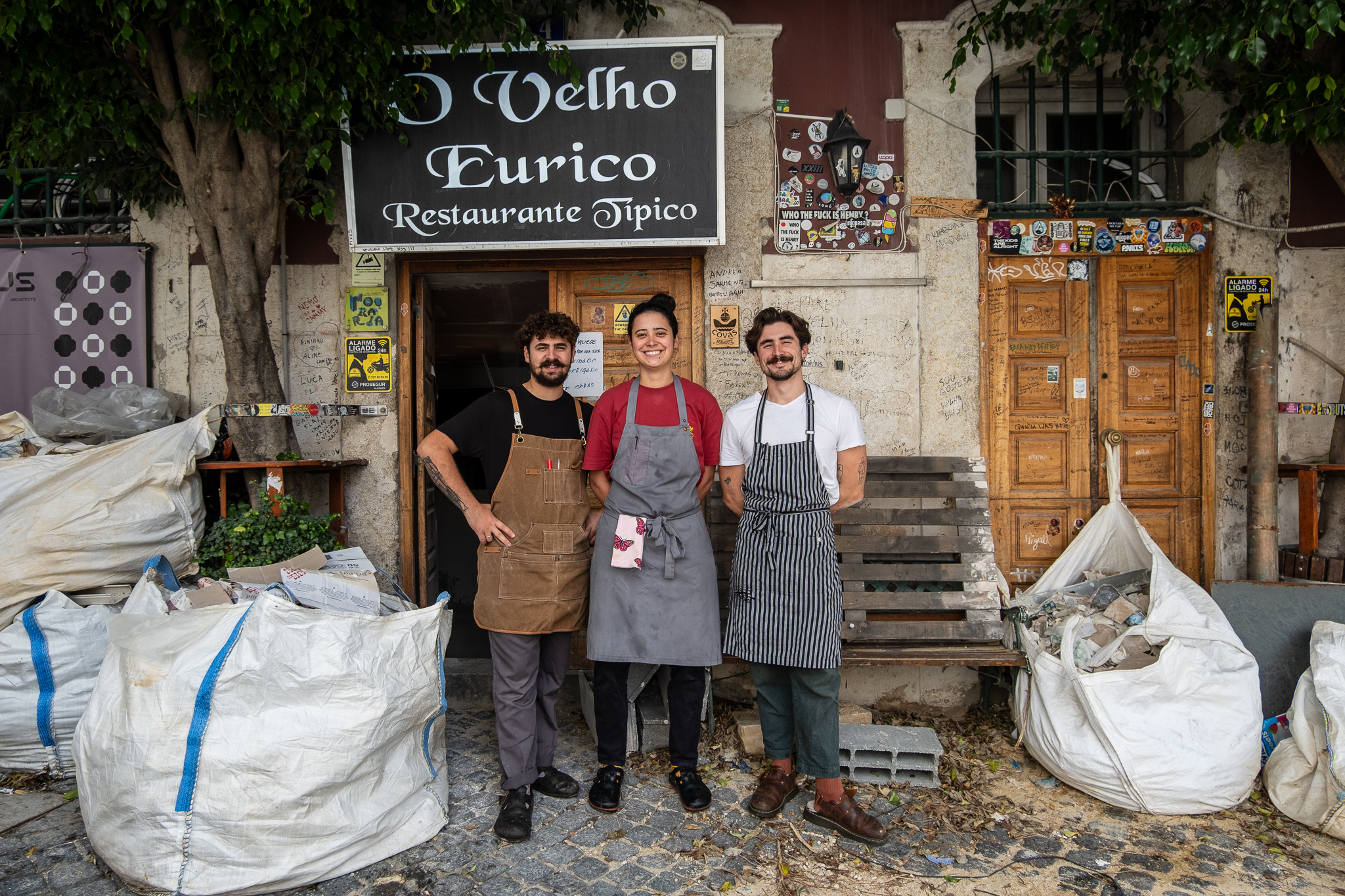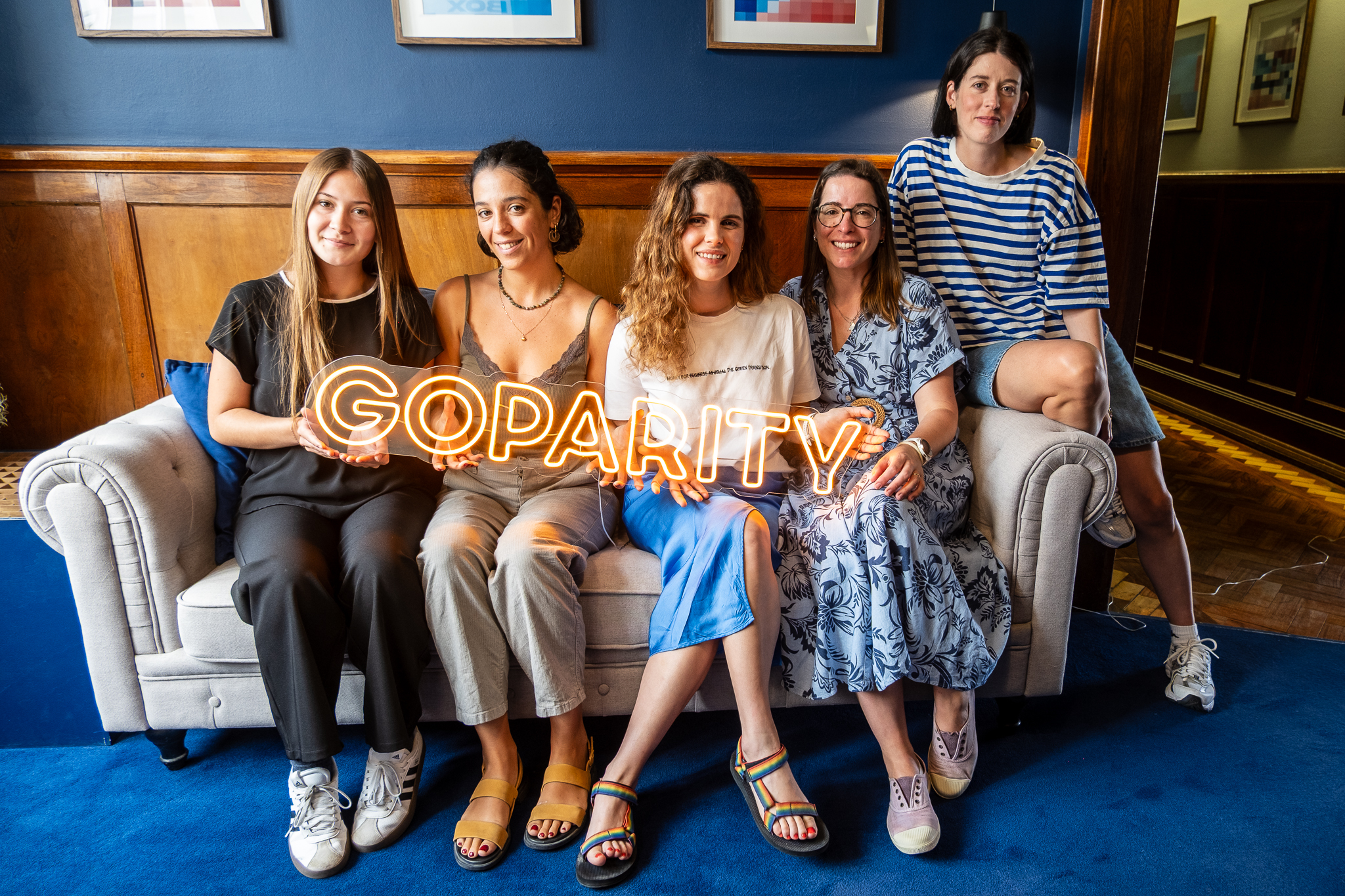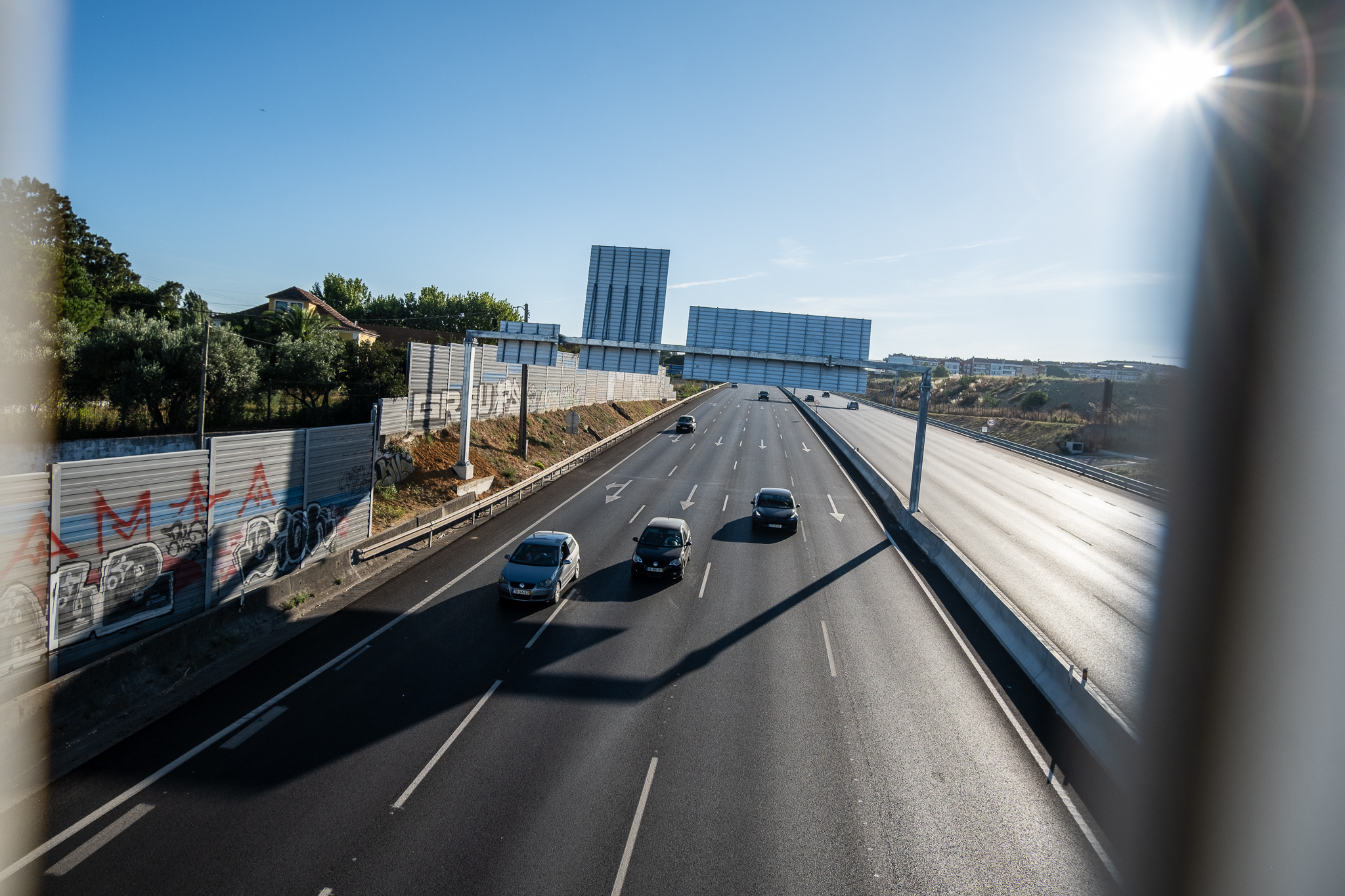EB1 Sampaio Garrido, in Arroios, now has a safer pedestrian environment for everyone, especially children. "I mean, the city also has to be transformed so that children can move around, use it, right? It's important to bear in mind that they have other needs."

We're at EB1 Sampaio Garrido, a school located in Arroios, more specifically at the top of Rua de Angola, in Praça das Novas Nações. A mega road tunnel would end thereThe infrastructure - estimated at 15 million euros in 2011 - is included in the city's Municipal Master Plan (PDM) and would give form to the true 5th ring roadalso known as Circular of the Hills. Without the tunnel, traffic from the eastern part of the city continues to pass through the middle of the neighborhood, albeit at a lower volume. Several buses also pass through. Right in front of the school.
No parent will feel comfortable having so much traffic in front of their child's school. They can't quantify it, but they know it's in sufficient volume to be a concern. In addition to crossing traffic, they point out excessive speeds and disrespect for pedestrian crossings, among other situations. A association of parents and kindergarten teachers made a complete diagnosis of mobility and safety around the school and presented it in May in a 15-page report. As well as pointing out problems, it also put forward solutions - simple, low-budget implementation proposals that would make it possible to improve the entire school environment.
They sent the document to the Lisbon City Council, which quickly accepted and implemented their suggestions. "The City Council really embraced this issue and was very quick. They did what we proposed. They validated our ideas. We had architects and engineers on the team, in the association, so we also had some knowledge to make this diagnosis with concrete measures and a project"Vera Higino, a representative of the parents' association, explains.
The municipality took advantage of the pretext of European Mobility Week, which took place between September 16 and 22, to proceed with the redevelopment of the school's surroundings. Calming and safety measures have been introduced, such as the placement of beacons to prevent parking on top of pedestrians or on bends - behaviors that are not permitted by the Highway Code.
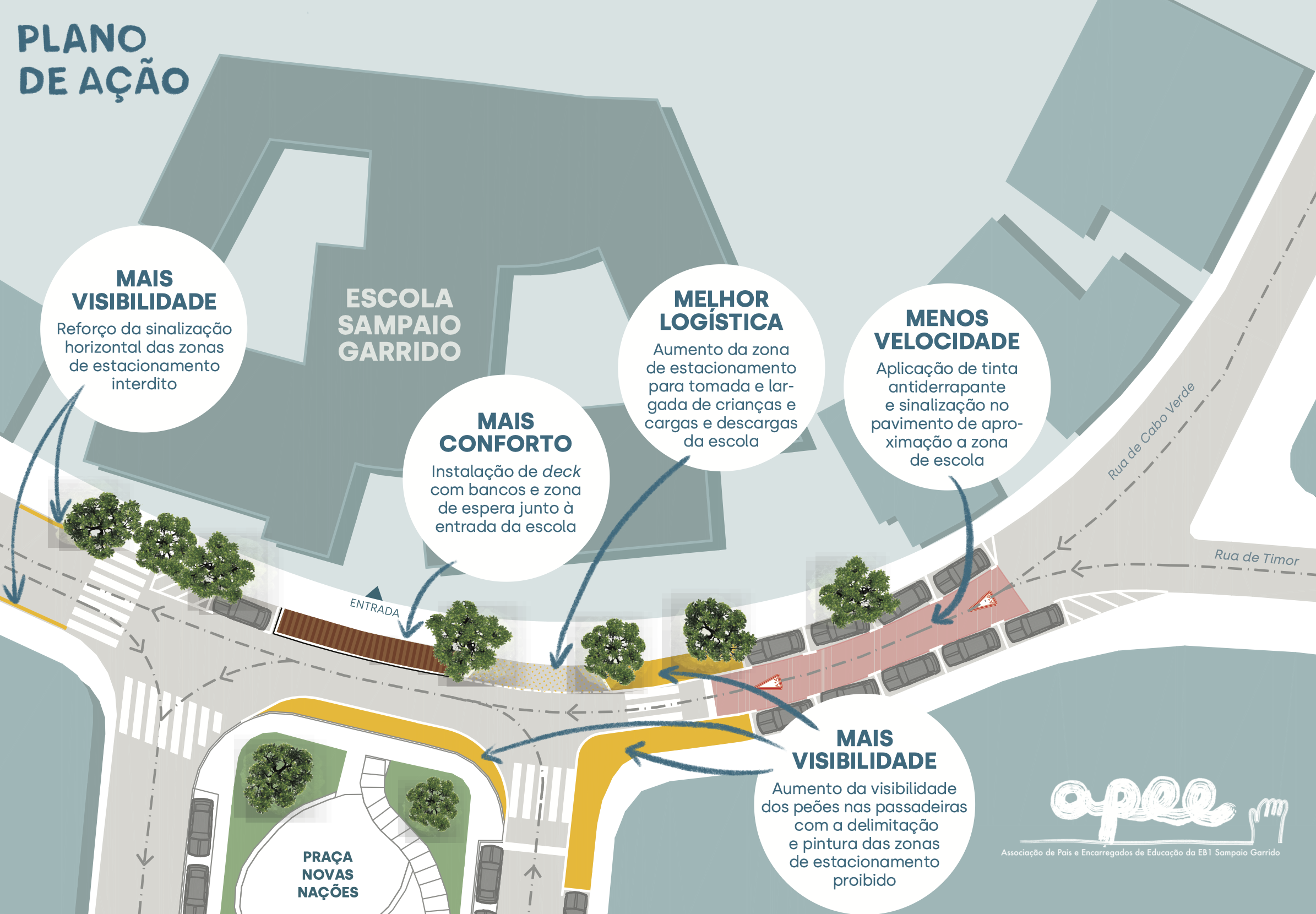
In addition to the beacons, the remaining areas were also painted - first by adults, then by the school's own children.This has been done in order to reinforce the parking ban, widen the pedestrian space and add more color to the street. In addition, right in front of the gate, a seating area with benches and flower boxes has been created, extending the useful area for fathers, mothers and grandparents to wait for the little ones while they nurture friendship or neighborly ties.

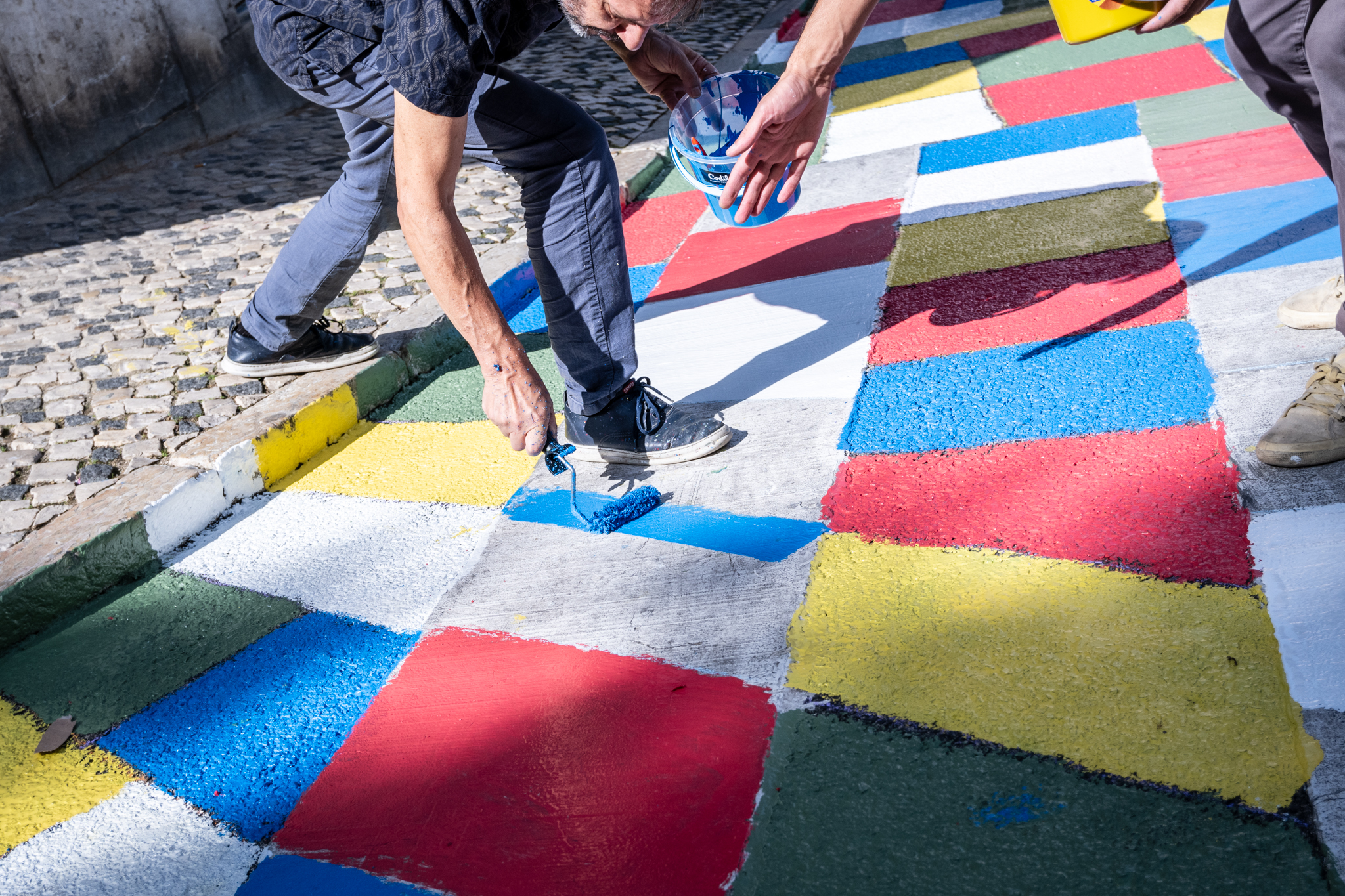


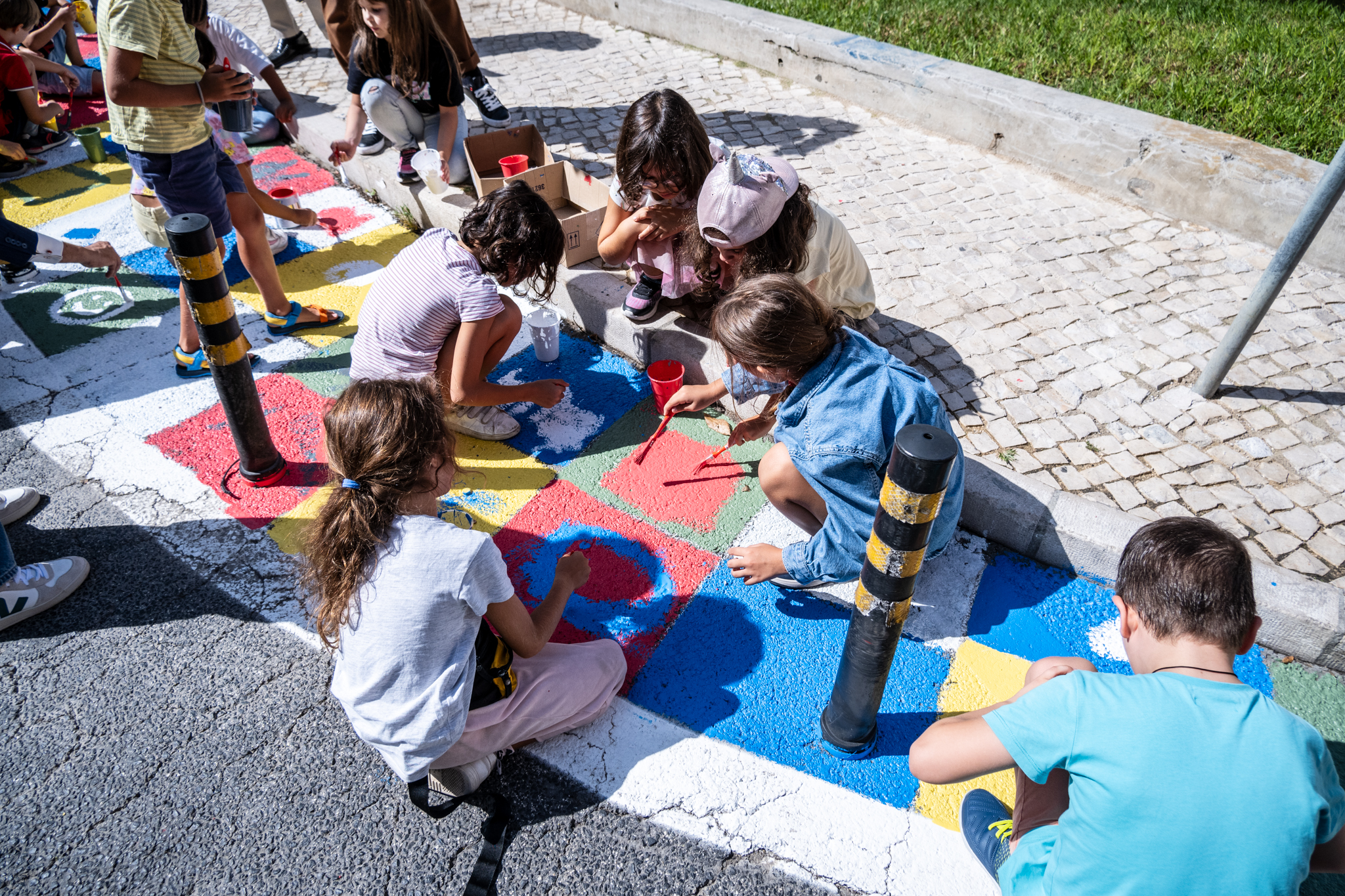
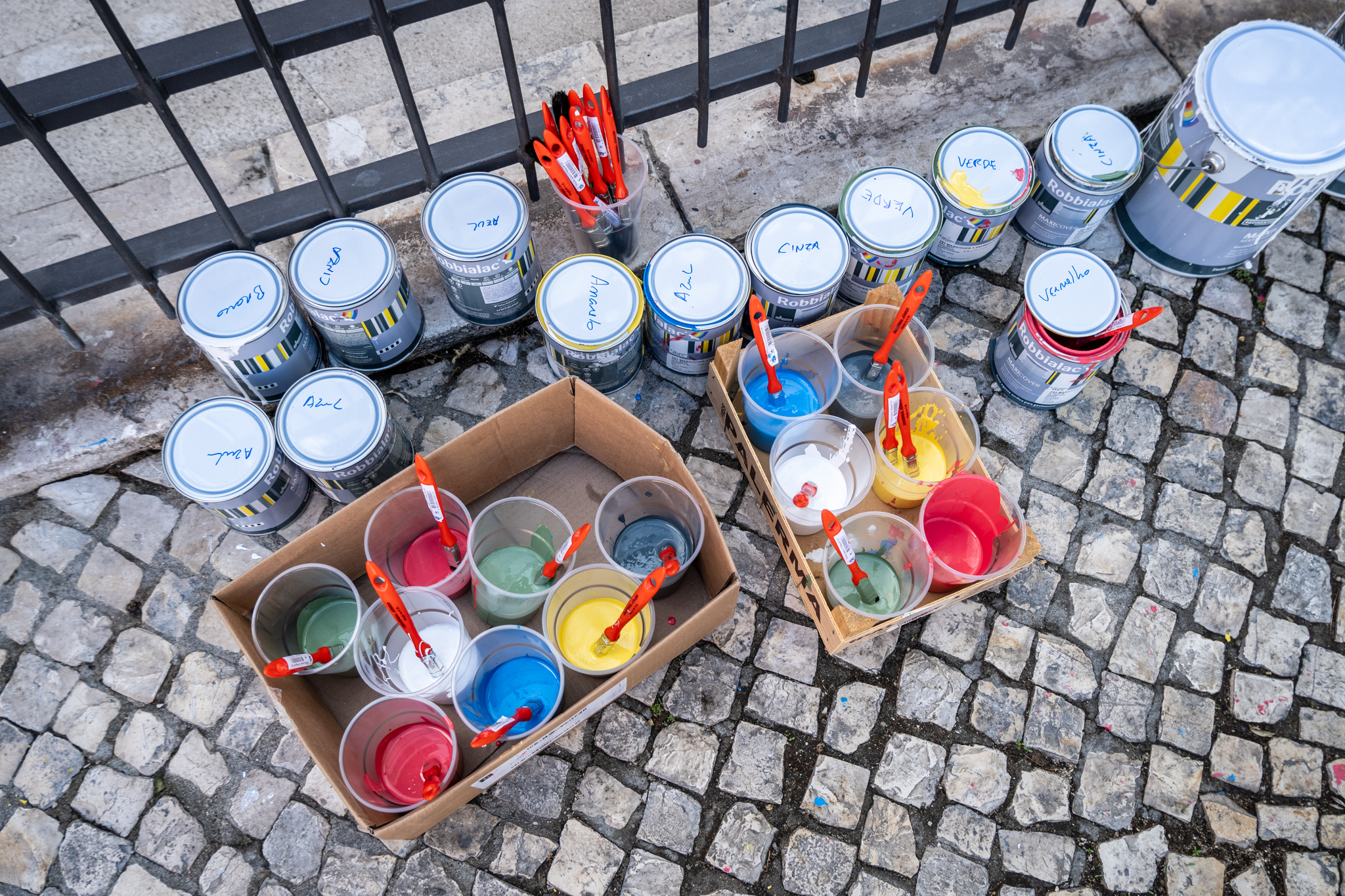
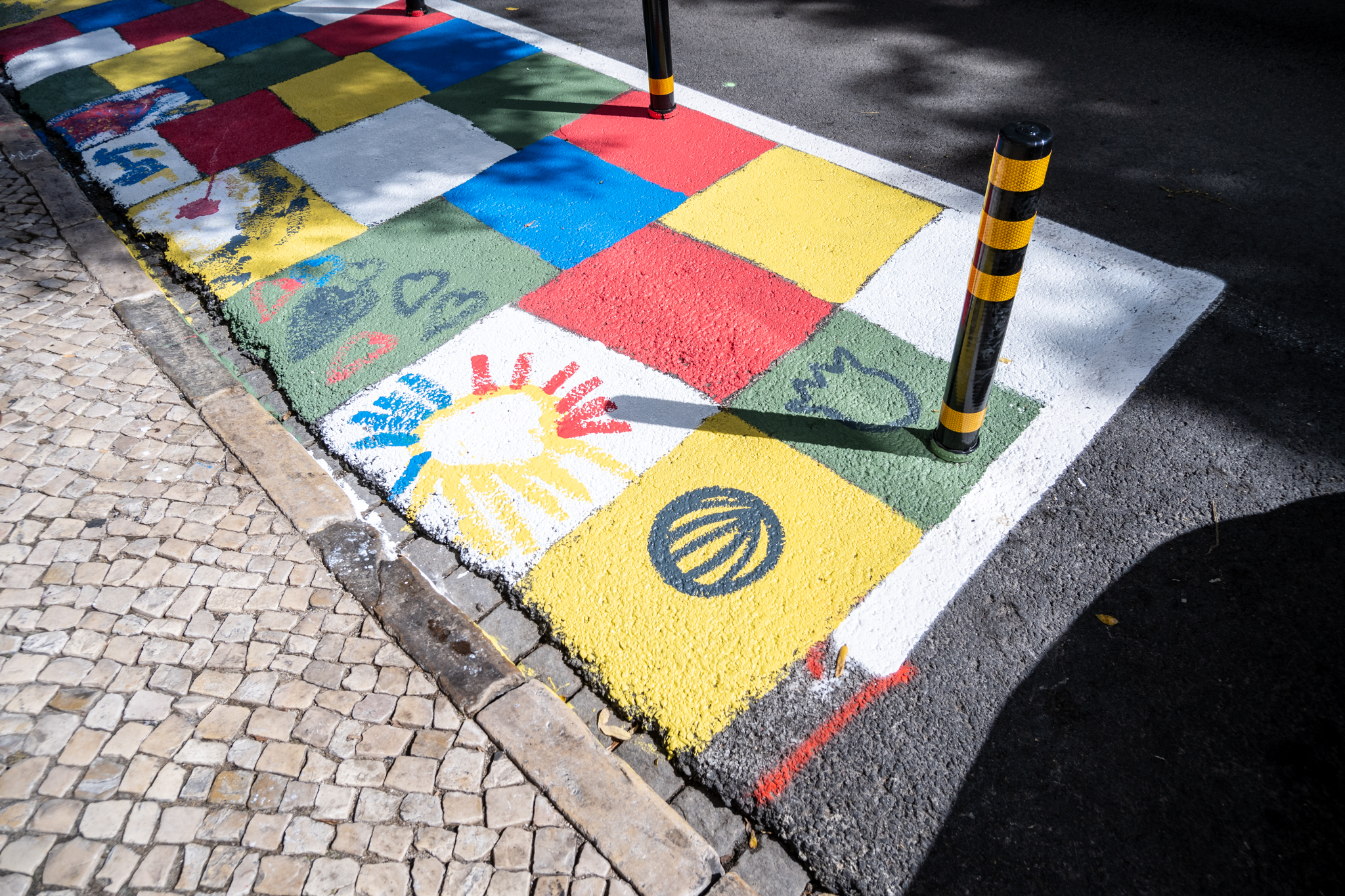
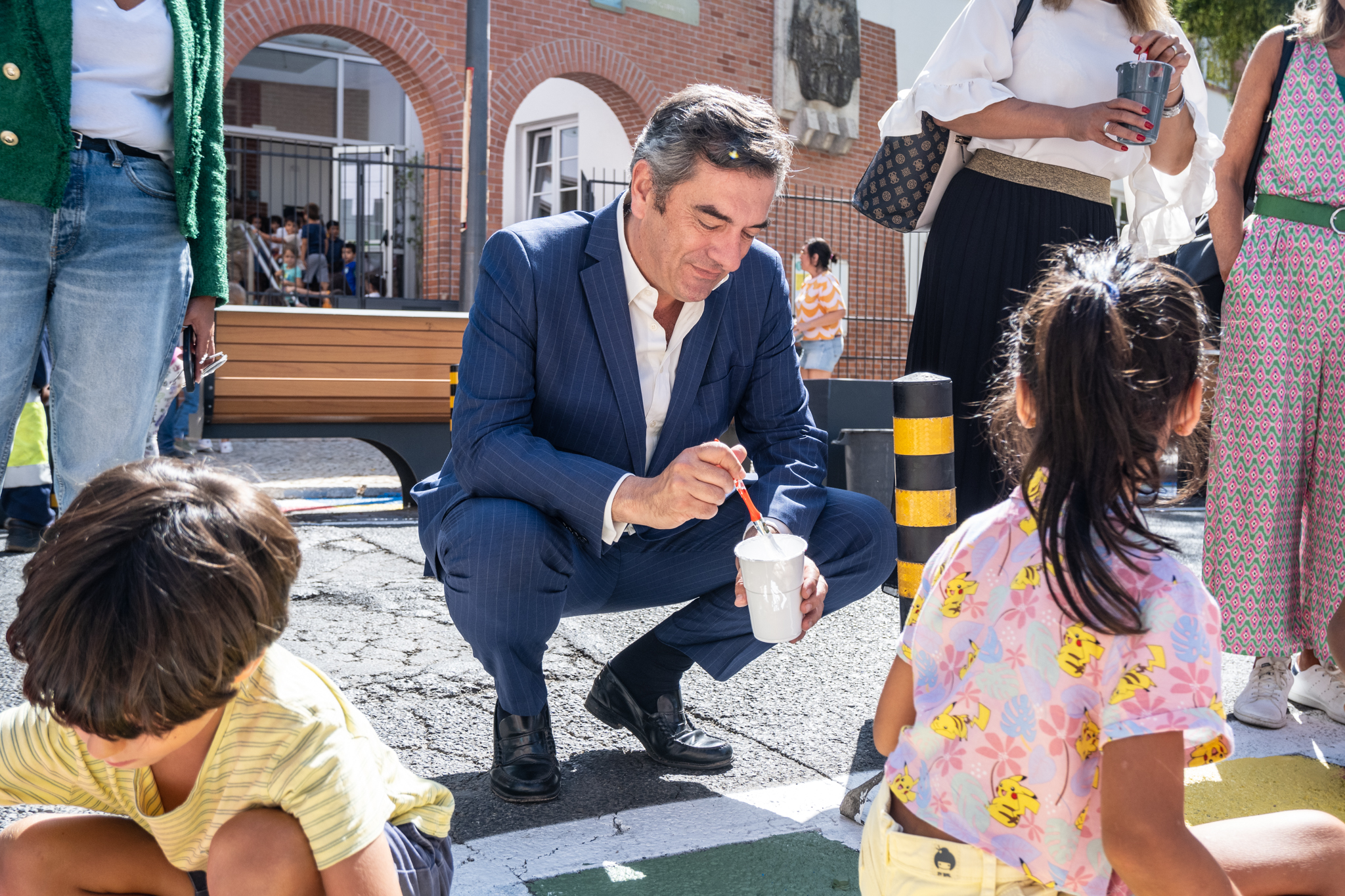
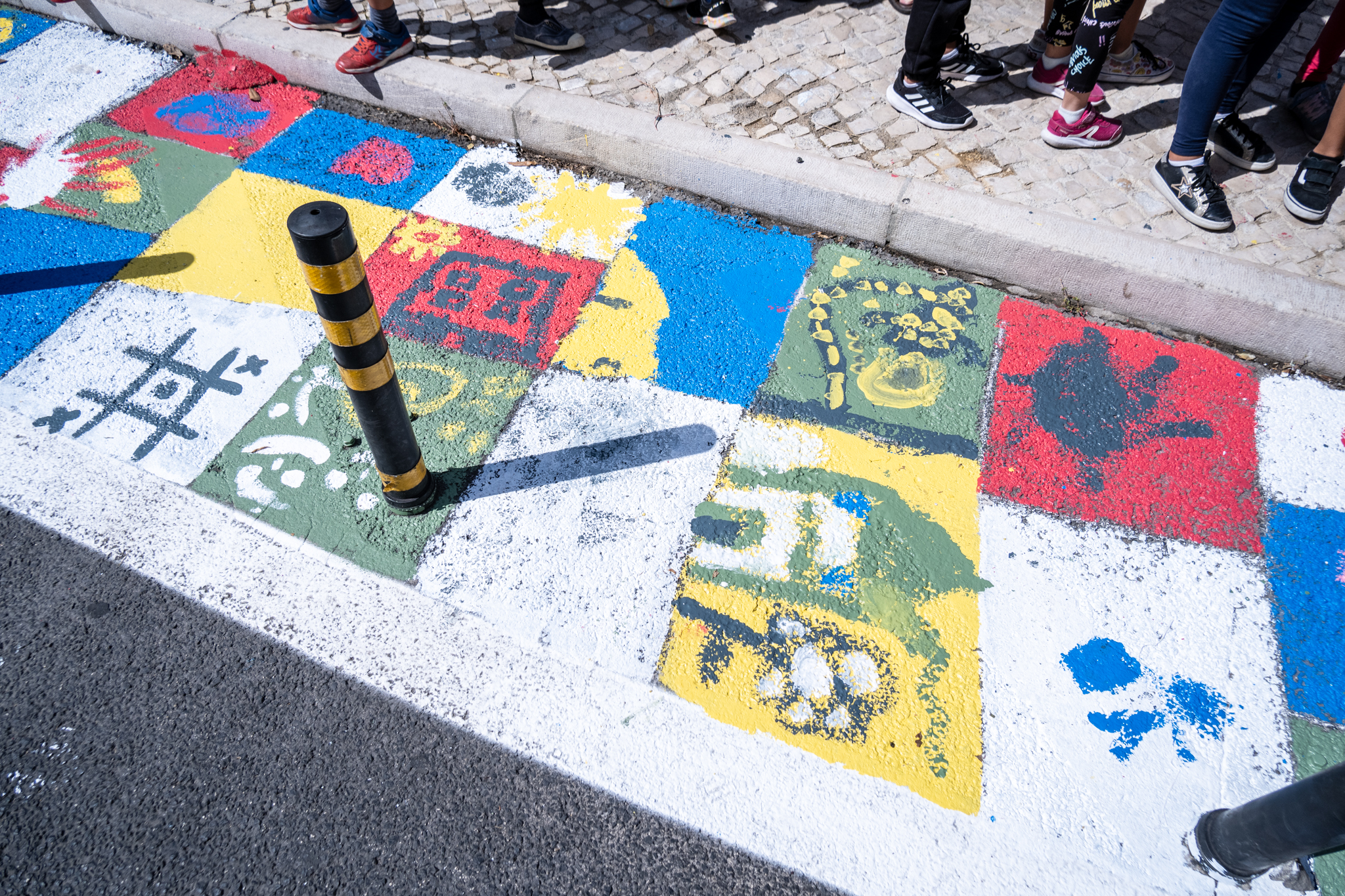

The children also lent a hand in creating this waiting area... or two, helping with the soil and planting the shrubs and flowers, which will bring more joy and freshness to the environment. The street furniture - the benches and planters - was taken from around the Arroios Market, where the Arroios Parish Council wanted to free up the two parking spaces for visitors to the market and local residents (these benches and planters were making two parklets).
"This space here was very limited. When fathers and mothers came to pick up the children, no one else could pass on the sidewalk. We had grandmothers and grandfathers coming here and leaning against the cars. It was very complicated. Now we have more space"Vera explains. "And another thing we want is for this new space to also become a channel of communication with the community. It's very important for the school to have this, a place where the kids can exhibit their work, their ideas, where they can even have a little party, sing, but with the community. School doesn't always have to be inside gates, inside walls, inside school buildings."
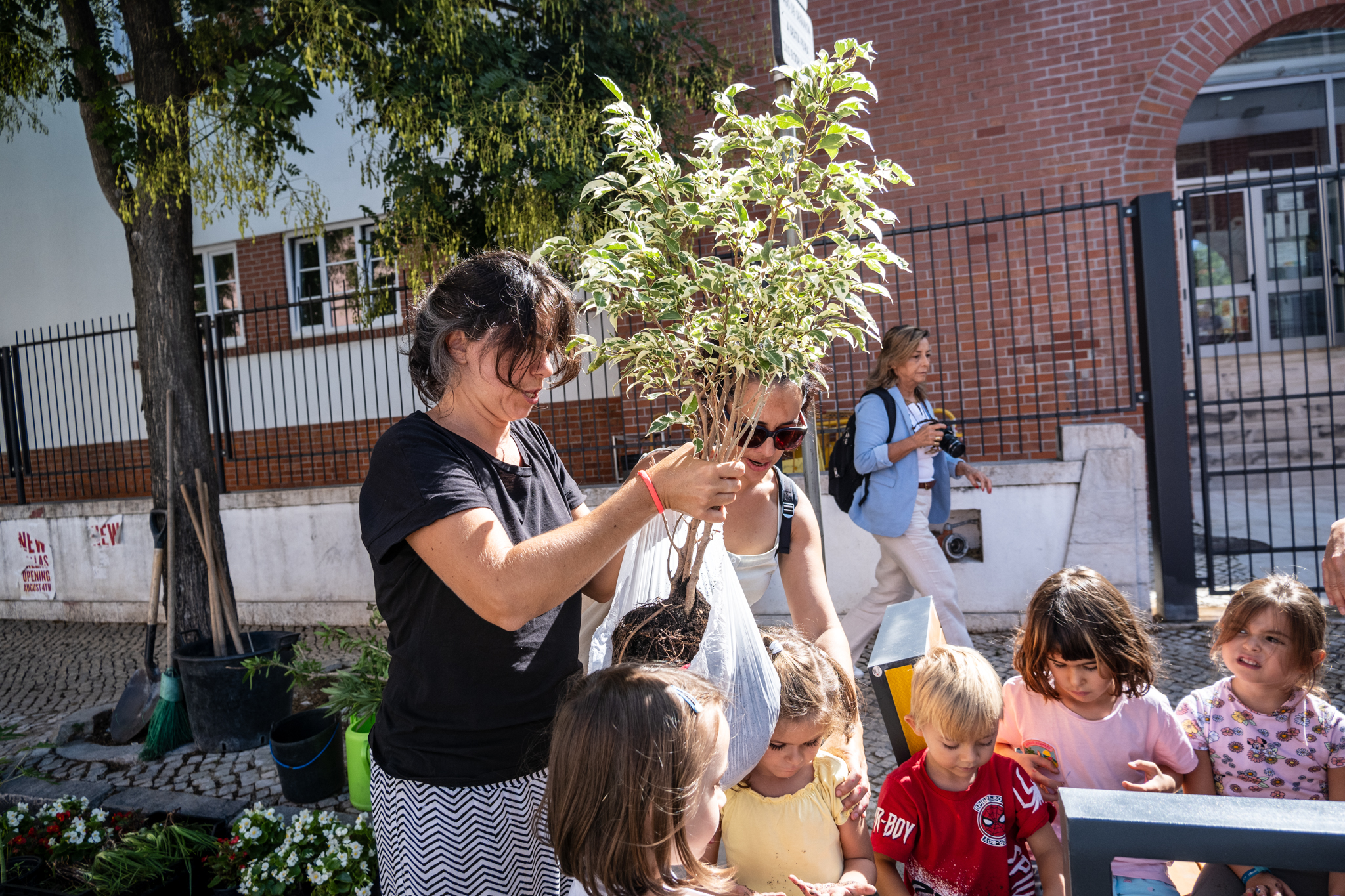
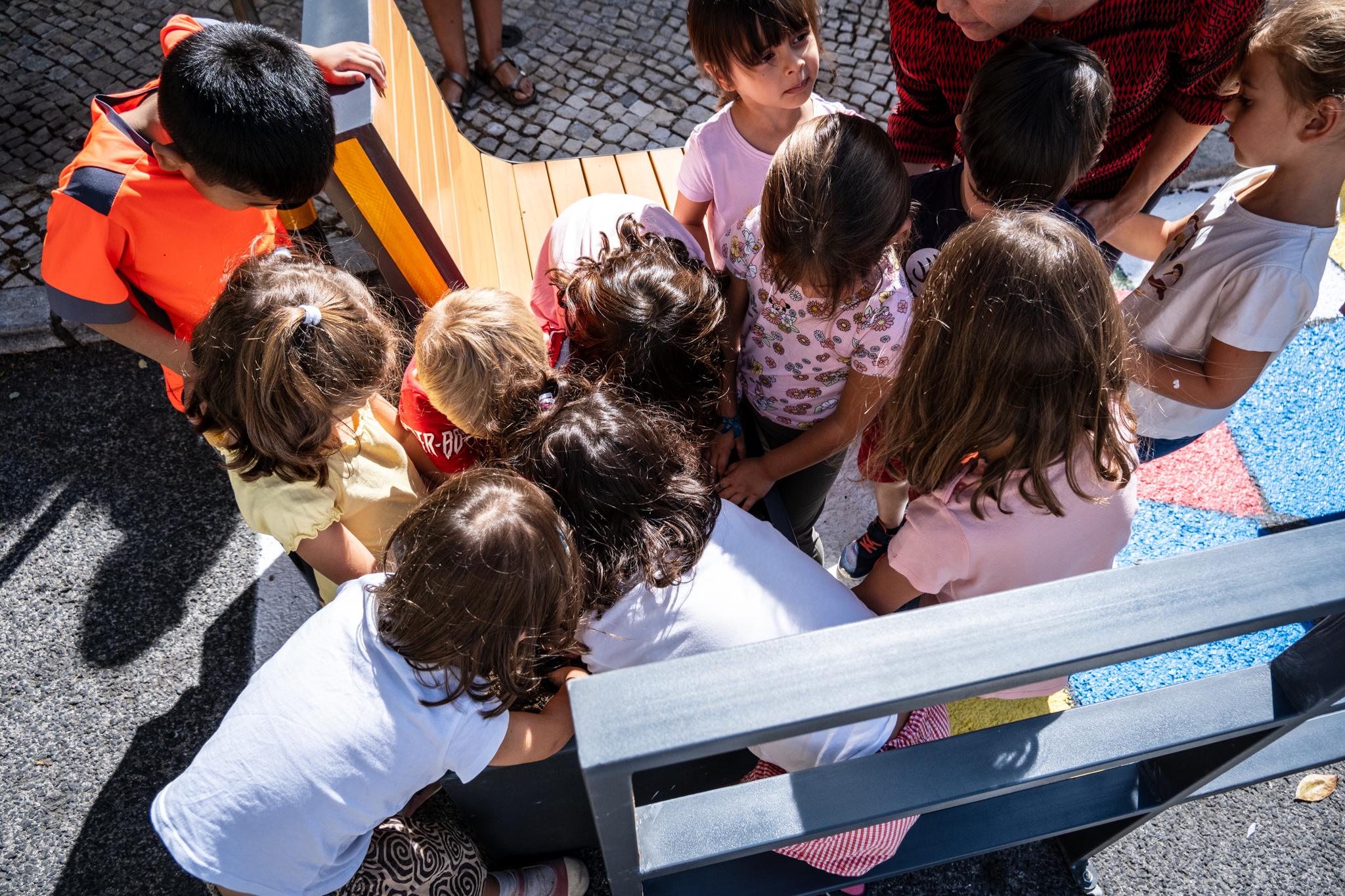
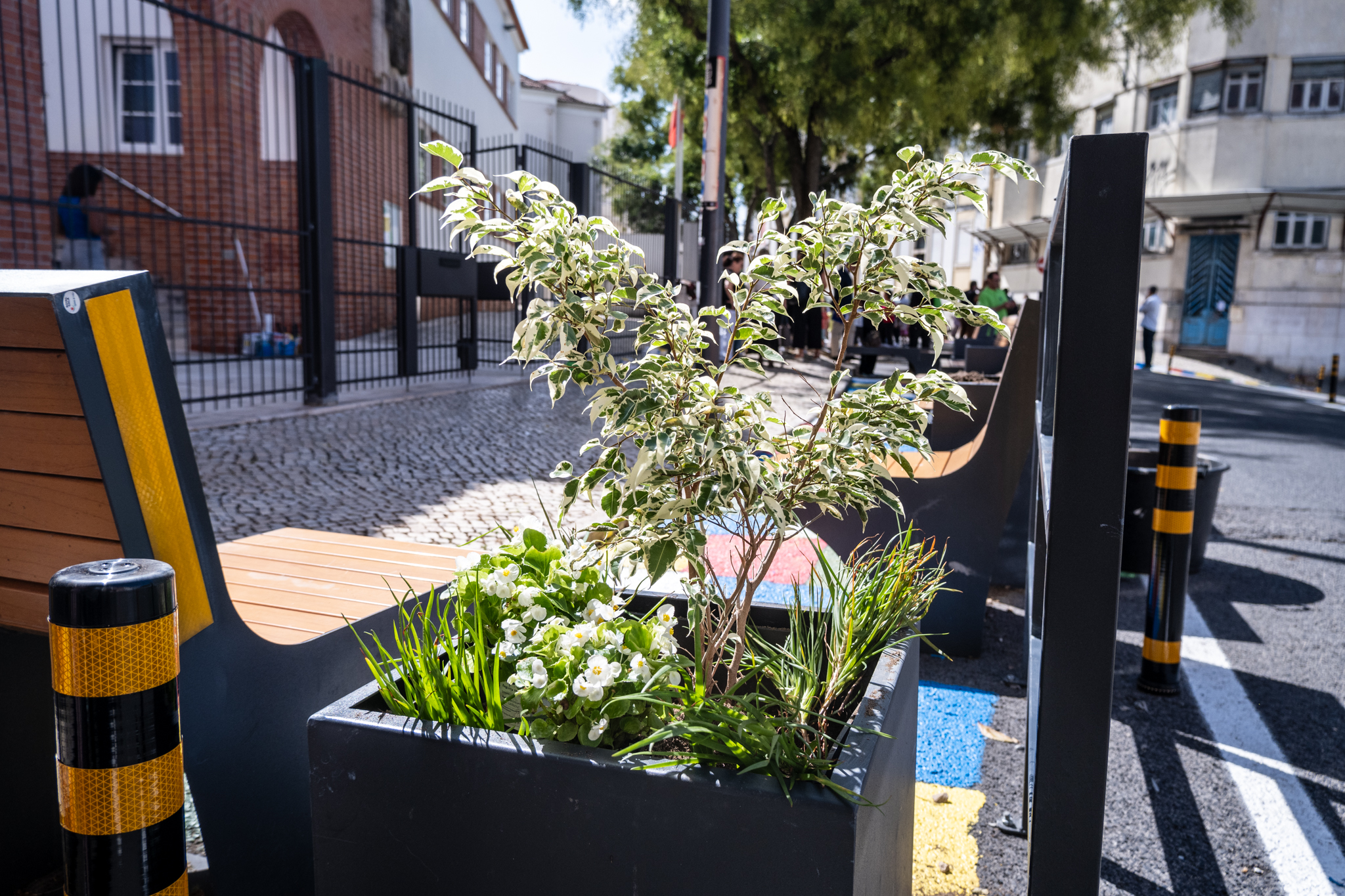

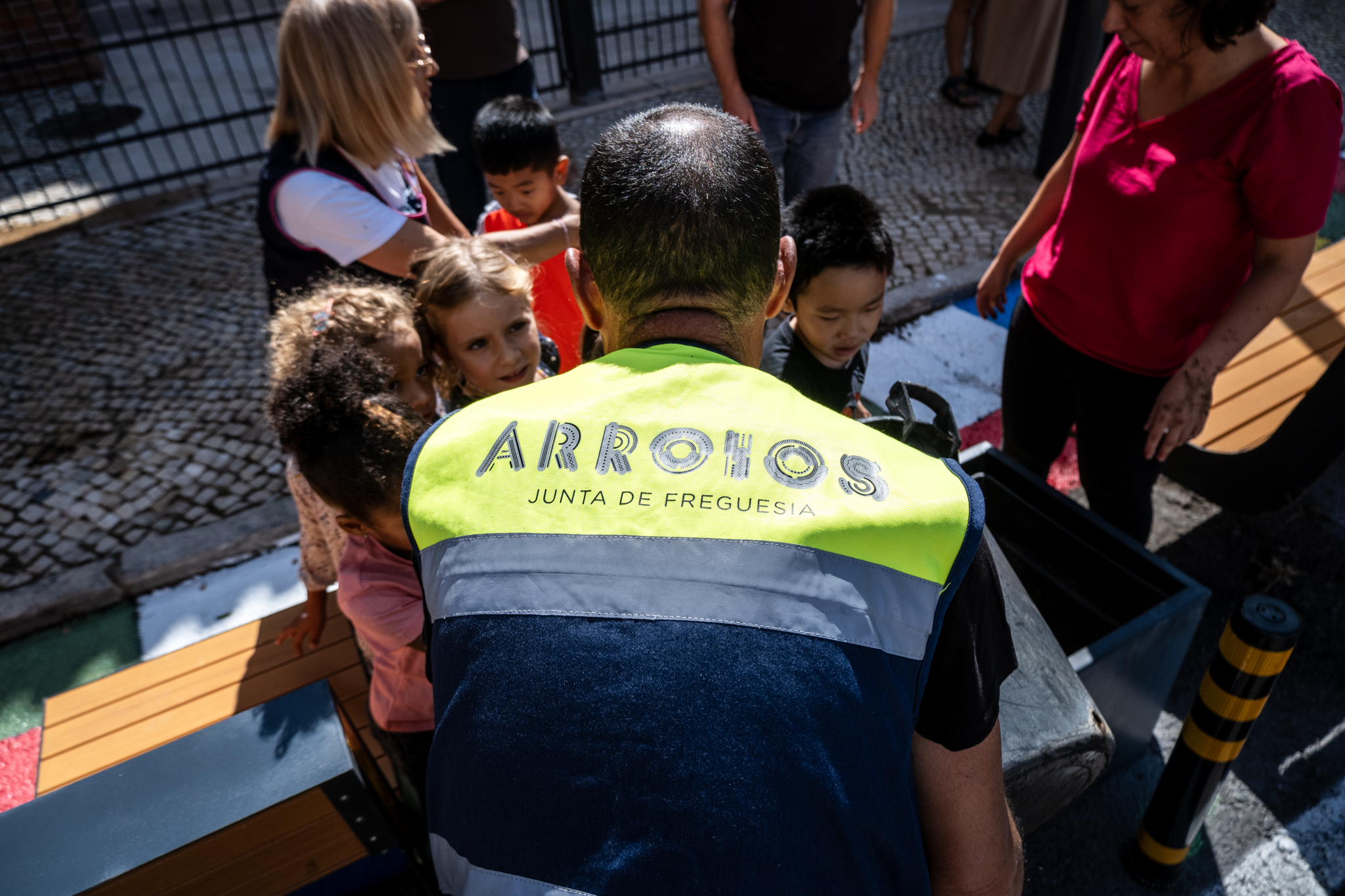

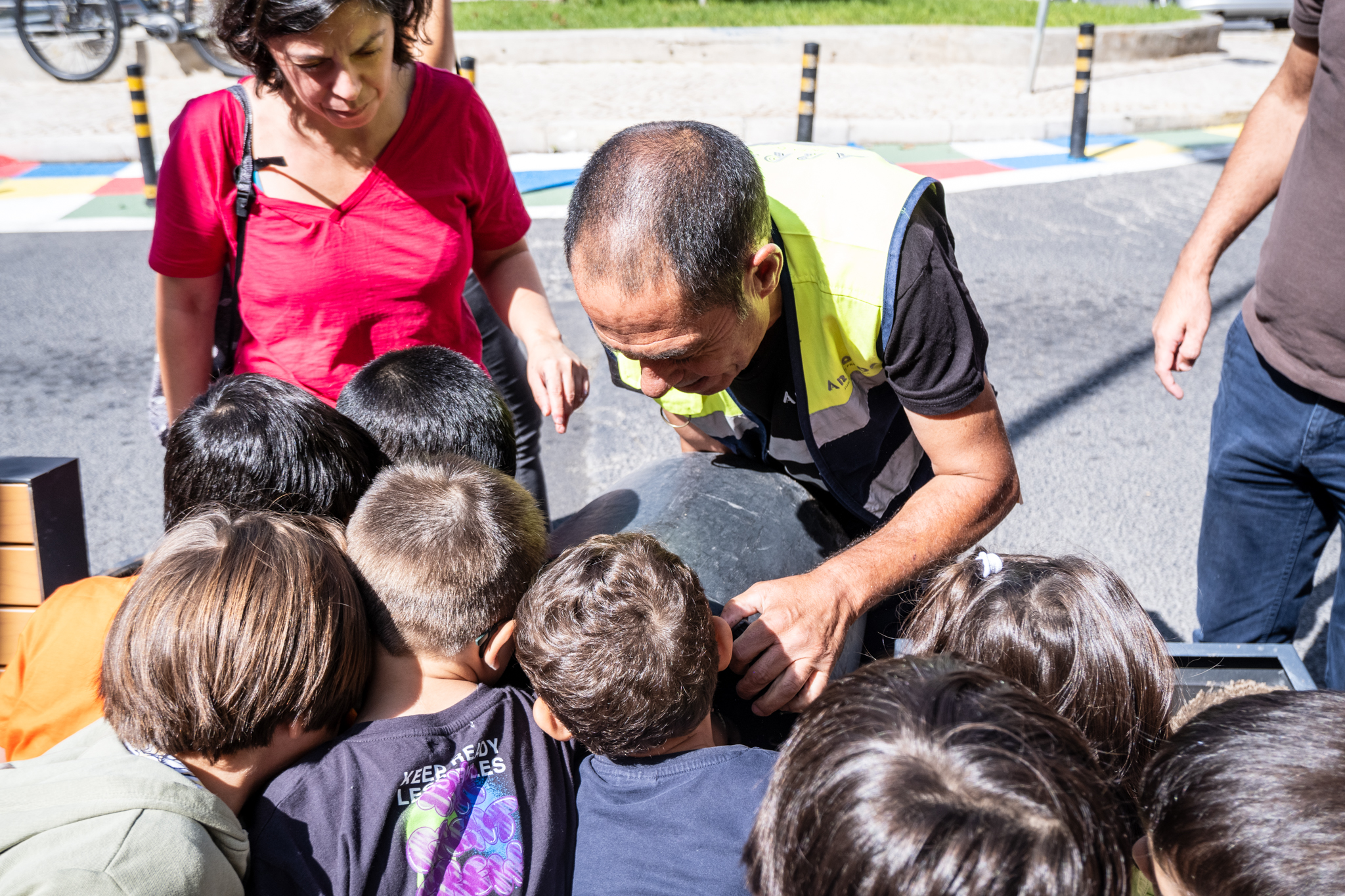


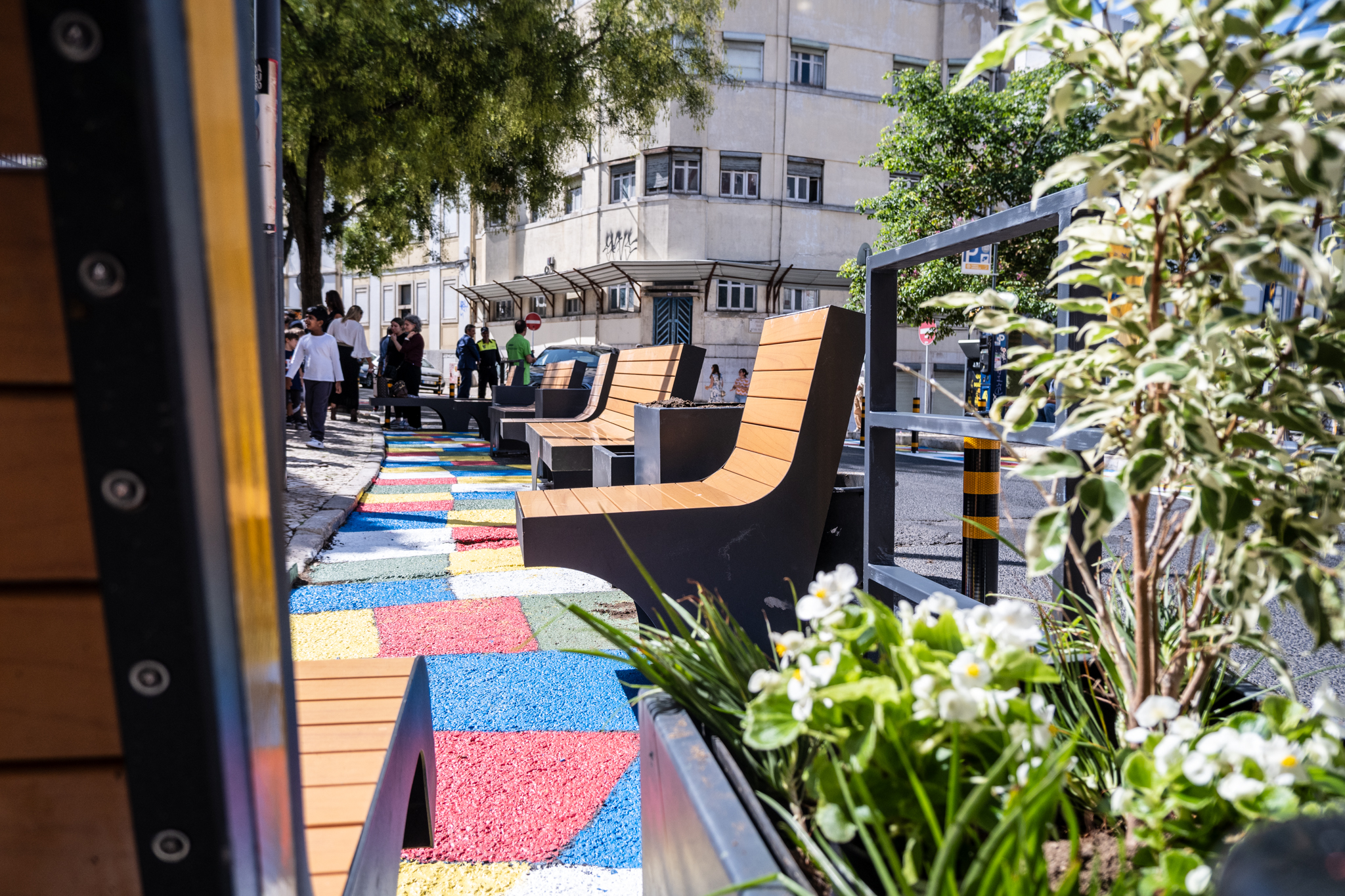
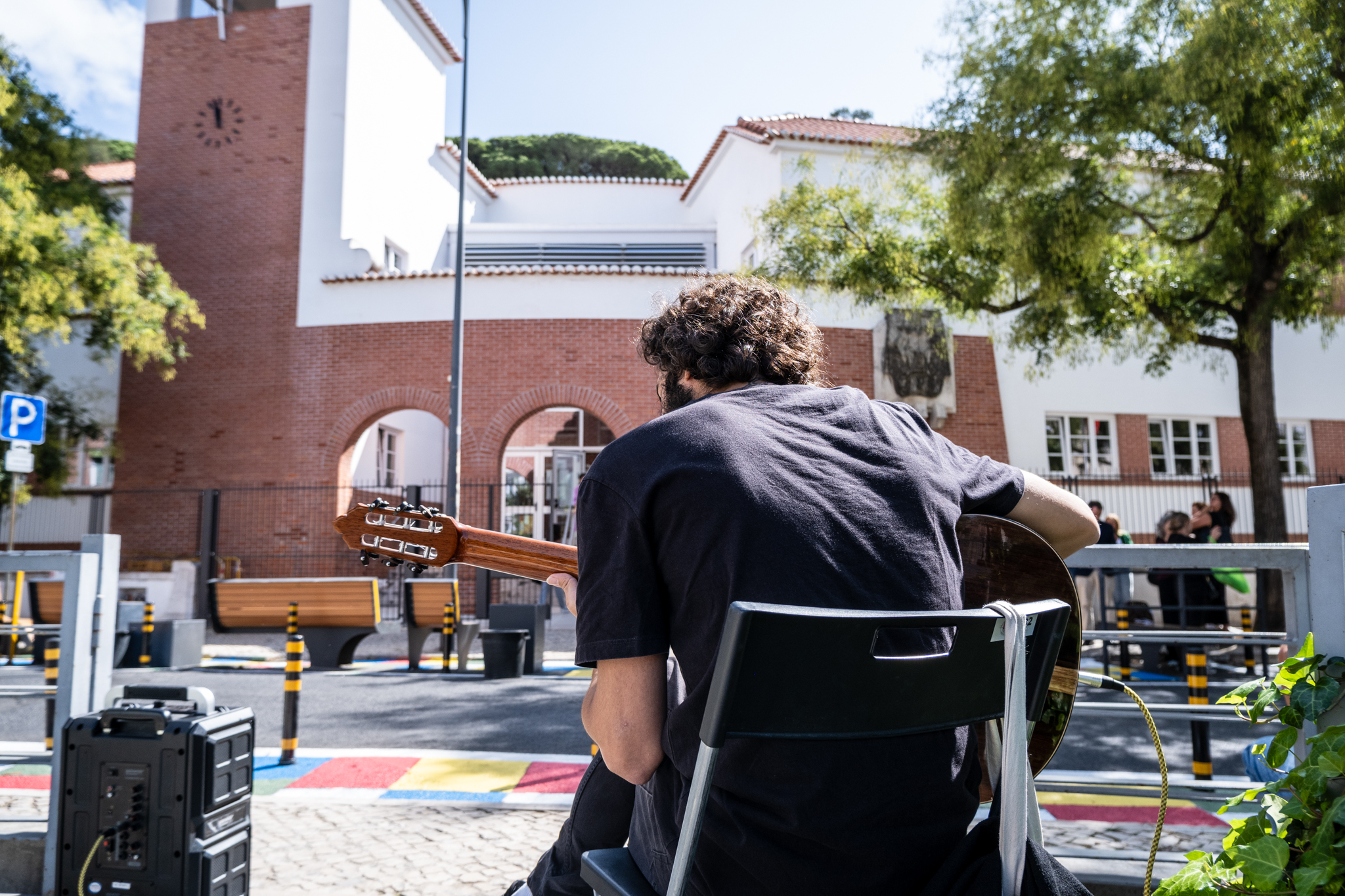
Overall, the intervention has increased pedestrian space and the safety of people, particularly children. An area next to the Praça das Nações Unidas garden was also painted and protected, thus narrowing the road channel and preventing parking. Next to the school, two spaces were left for passengers to pick up and set down and also for loading and unloading, as well as a parking space with a charge, which the Town Hall and the Council saw no need to remove.
The parents' association assures us that the intervention did not eliminate parking spaces, as it was never allowed to park on top of crosswalks, within five meters of them or on bends. "We can't take away all the places we'd like. This is a residential area", recognizes. "But the issue of the removal... - it's also important to point this out - the removal of the supposed parking lot was exclusively to increase the visibility of drivers for the children."
The parents' association, the parish council, the town hall and the children all took part in building a better environment for this school in Arroios. "It's not finished yet, but we've taken advantage of this European Mobility Week to start putting some of these ideas into practice"Vera assures us that there is a lack of apply a red non-slip surface on the asphalt approaching the schoolwith adequate horizontal signage to let drivers know that they are near an area with children.
After this lighter and quicker intervention - more pop-up -Vera and the parents' association want a more ambitious and also more definitive project. The idea is to remove road traffic from in front of the school gate and extend the garden and the New Nations Square. There has already been a proposal for this, drawn up by the cooperatives Trabalhar Com Os 99% and Largo Residências under the BIP/ZIP program, but it didn't go ahead; now the Lisbon City Council is re-examining it, having already carried out a preliminary study which, in general, maintains the ideas previously discussed with the population.
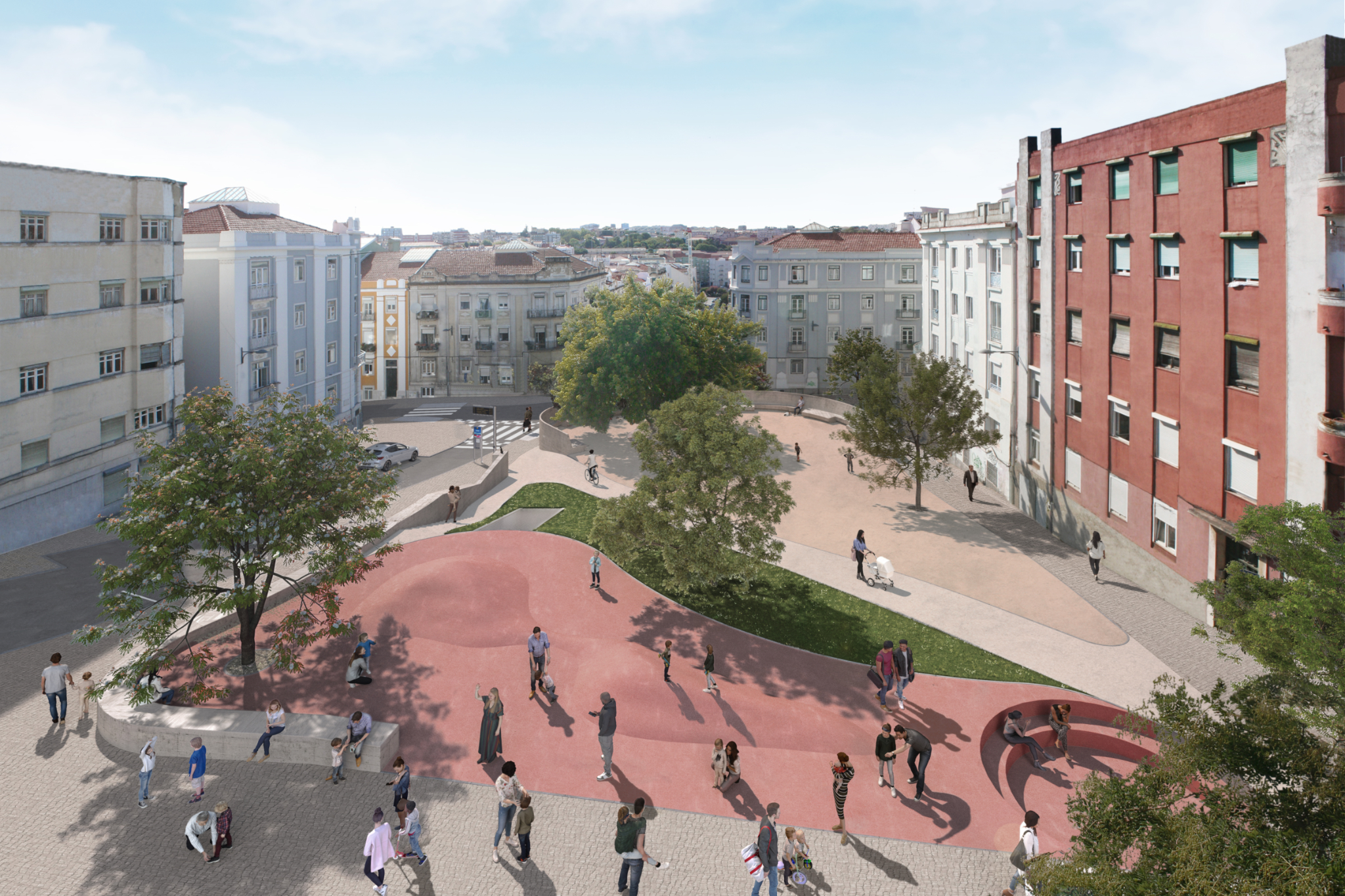
Praça das Novas Nações is a key public space in the Anjos neighborhood, in the parish of Arroios. Although it is in a state of disrepair and neglect, this square is a point of reference with constant movement, occupation and life for the population of the neighborhood and the children of Sampaio Garrido. Vera and the rest of the association also want the school to be connected to the square. "We have a square right in front of the school. At the end of the day, the kids take ownership of it, but because there's this street separating the school from the square, it seems like two things don't talk to each other. There's no appropriation of this public space by the school"describes her mother, who is also an architect.
"We don't think this street in front of the school makes sense, because it's dangerous. Kids and parents feel this anxiety, this problem, every time they come to pick up or bring their children. The main aim is to link the square to the school." But in addition to this, both the BIP/ZIP proposal and the preliminary study now being carried out by the municipality also propose extending the square to one of the façades of the buildings, linking Rua de Timor to Rua de Cabo Verde and making this a one-way road circuit.

The change in road design would break up some of the road links in the neighborhood, in the hope of also reducing through traffic; but it would offer a larger, safer New Nations Square connected to the school. "The top priority is this: to provide the school with a quality public space where children can play after school." Vera says that in recent years they have been experimenting, joining forces between local associations, the parish and the city. With the Brincapé project, promoted by the Association for the Promotion of Child Safety (APSI) with other organizations, they closed the street that separates the school from the square to traffic, opening it up to children and play. "We closed the street. It proved that it really is a solution that works. This street can be closed."
And the cars aren't needed at that school? A EB1 Sampaio Garrido is a school where the majority of children walk to school. In a recent survey carried out by the parents' association with the help of the teachers, which gathered 188 responses from a total of 208 students (90.4%), it was found that 68% of the children surveyed walk to and from school, with 11% going aloneonly 22% goes by car. Also the indicators in the report Hands Up! of the Lisbon City Council, which provides an annual snapshot of school trips in the city, show that in 2022 for the parish of Arroios, walking is preferred by pupils over car travel. In the 2015/16 school year, as part of an APSI project, it was found that 72% of the children at this school walked even though the conditions on the route were difficult and unsafe. At the time, APSI presented a "set of proposals" to improve mobility and access for the little ones, including closing the street in front of the gate to traffic.
"I mean, the city also has to be transformed so that children can move around, use it, right? It's important to bear in mind that they have other needs"Vera stresses. While active mobility (walking) is fundamental to increasing children's levels of physical activity, it is also necessary for them to gain autonomy. For autonomy to exist, we must have guarantees of a safe urban environment. From a road safety point of view, safety in public spaces depends a lot on speed and its relationship with braking capacity. Reducing speed means reducing risk.
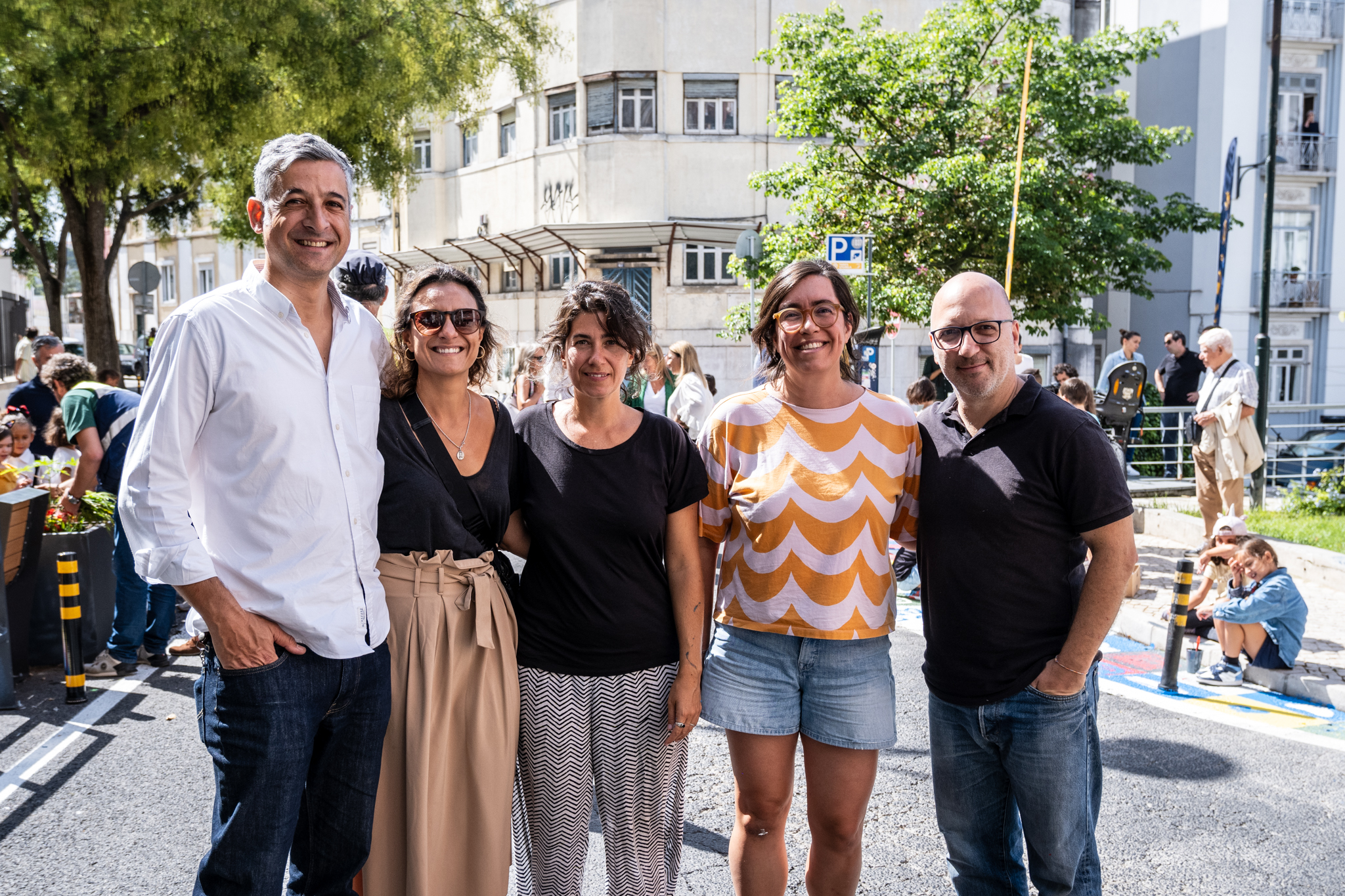
The diagnostic work that this association of parents and guardians of this school did could perhaps have been done by the Lisbon City Council. And it could have been done at city level, for greater security around schools. Barcelona and Paris are two example cities in this regard: both have created a municipal program to intervene in public spaces near schools, almost always applying the same calming measures. Vera believes that it is also the citizens' duty to take an active role. "That's our role too, isn't it? I mean, if something isn't right, it's also up to us to help make sure it's on their agenda, so that they look into it, and so that we can really do something together."he explains. "The City Council found out about our intentions, spoke to us straight away and there was an immediate understanding. It was the same with the council. So it was something that happened. And it was a very important joint effort with local associations and projects, such as Brincapé, APSI and Regador."

